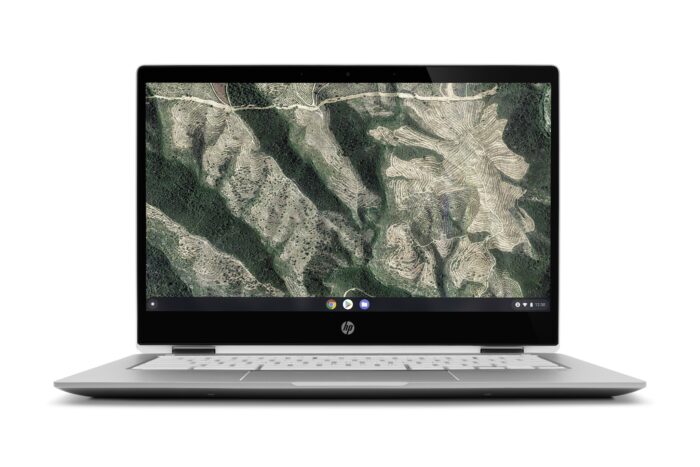More and more organizations are adopting Chromebooks as everyday work computers for employees, both on- and off-site, and for good reason. These nifty devices boast a high level of usability, versatility, and security, all at relatively low overhead.
Of course, with the implementation of these devices, IT must adapt strategies to optimize asset management and ensure the integrity of their digital infrastructures. In this piece, we’ll discuss how they can do just that to facilitate efficient and productive work environments.
-
Utilize zero-touch enrollment
Setting up company devices can involve a significant amount of time investment when operating at scale, and things become even more complicated if employees aren’t all on-site. This is where zero-touch enrollment can make a major difference, however.
Zero-touch enrollment is a service provided by Google that allows IT teams to streamline the configuration and setup process for enterprise devices.
It enables pre-configured devices to automatically connect to the company’s mobile device management (MDM) system when powered on, at which point the necessary configurations are downloaded, applying all relevant enterprise policies.
This removes all of the burden of manual configuration and eliminates the need for on-site setup altogether, allowing organizations to ship Chromebooks straight to remote employees.
By embracing zero-touch enrollment, IT can reduce their workloads while also ensuring that all devices are ready to use and compliant with company policies.
-
Implement patch management software
One great aspect about ChromeOS devices is that they benefit from a lot of automatic updates implemented by Google. This can help to improve the security of Chromebooks while streamlining IT management. But while this is certainly beneficial, it doesn’t eliminate the need to supervise and manage these devices to some extent.
IT teams are still required to keep up with the update schedule, check compatibility for certain apps, and ensure that updates are being correctly installed. This is why it’s important to implement the best patch management software available.
To adequately manage and secure Chromebooks, IT needs to have proper visibility across its digital infrastructure. This is especially important in modern environments, where employees are often using a variety of interconnected digital devices, all of which are running different operating systems and have different security needs.
Patch management software can enable IT to establish the visibility they need, ensuring that ChromeOS devices are patched as intended and not at risk.
These tools can also be used to schedule updates for devices in off-hours, manage third-party app updates, and report on potential vulnerabilities to ensure the security and integrity of mixed-device networks.
-
Streamline IT support with remote monitoring and tools
Of course, the challenges of IT management don’t end there. Having your organization’s Chromebooks set up and secured is one thing, but it’s also necessary to provide on-demand user support for the employees utilizing those devices.
This is something that can be especially problematic in hybrid workplaces or those that allow WFH arrangements, so it’s useful to have scalable tech support systems that allow for remote assistance.
IT managers can implement remote IT monitoring systems and support tools to assist employees with technical issues. IT teams can rely on browser-based access and screen sharing to gain insight into problems and provide employees with steps for troubleshooting and issue resolution.
Applications like Chrome Remote Desktop and BeyondTrust Remote Support will even enable IT to control Chromebook devices remotely in the case of more complex issues, while tools like Remote Powerwash can make it possible to view system logs or reset and recover devices.
By implementing these kinds of tools, IT can provide comprehensive tech support even when working remotely, ensuring that company devices stay fully operational at all times.
-
Devise comprehensive lifecycle policies
While configuration and maintenance comprise the bulk of what IT device management, it’s also important to have a system for managing the wider lifecycle of devices. In particular, it’s advisable to establish clear policies that delineate how Chromebook’s end-of-life (EOL) events are handled.
When a Chromebook reaches its update expiration date, it ceases to receive automatic updates from Google, and IT teams need to be prepared for this so as to avoid leaving digital infrastructures vulnerable to security threats.
Creating clear policies and a framework for device lifecycle management will ensure that this issue is dealt with optimally. Processes should be set up for the tracking of update expiration dates and the replacement of devices. Policies should also define how these devices are decommissioned and disposed of when they reach the end of their lifecycle.
Establishing such policies will ensure that device lifecycles are forecasted and managed for better security and budget alignment to reduce unnecessary disruptions to operations.
Wrapping up
One of the great benefits of Chromebooks is their simplicity and efficiency, but managing them at scale still requires planning and an effective strategy supported by the right tools.
By utilizing zero-touch enrolment, patch management and monitoring tools, and establishing clear, comprehensive device lifecycle policies, IT teams leverage these innovative devices while maximizing security and performance.


